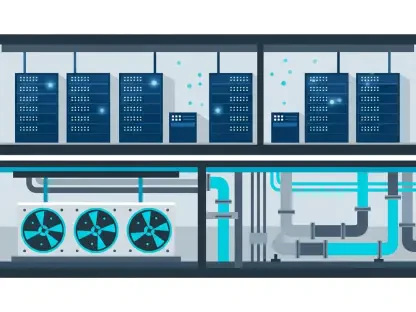Listen to the Article
Globally, businesses waste $65 billion annually on telecom inefficiencies (redundant infrastructure—duplicated towers, overlapping fibre lines, and underutilised assets) that deliver little added value.
Telecommunications companies didn’t build networks intending to fragment connectivity or duplicate costly infrastructure. Yet, today’s telecom landscape often reveals precisely that—duplicative towers, overlapping fiber lines, and costly infrastructure redundancies—all driven by competitive isolation.
Carriers have traditionally maintained separate, proprietary infrastructures to ensure their service quality and control; however, this belief, while understandable, has quietly cost the industry billions in wasted capital, fragmented coverage, and operational redundancy.
Today, the case for infrastructure collaboration has never been more urgent.
This article examines why traditional telecom infrastructure models are no longer sustainable, how neutral hosts address the misalignment between cost, coverage, and performance, and what it truly takes to transition into a shared future, without compromising your competitive edge.
Infrastructure Isn’t the Problem—Isolation Is
The real challenge in telecom infrastructure isn’t the lack of towers, fibre, or radio units but rather the siloing of too many of them.
Each carrier maintains its own footprint—built, staffed, and managed independently—while connectivity gaps and maintenance inefficiencies continue to scale. This isn’t just a logistics headache—it’s a costly, industry-wide inefficiency.
Energy costs are rising, environmental regulations are tightening, and customers are demanding coverage in areas that don’t justify solo investment. The result? Telecom teams are being asked to do more with less, often on infrastructure that doesn’t talk to anyone else’s.
The promise of neutral host infrastructure is simple: connect once, serve many. One set of assets, multiple carriers, is efficiently maintained, financially predictable, and environmentally lean. Most importantly, it is built for resilience and reach.
Alignment, Not Ownership, Drives Performance
To be clear: neutral hosting doesn’t mean giving up control but regaining efficiency.
In a traditional model, each provider builds duplicate assets—towers in the same location, fibre routes along the same corridor—just to “own” their lane. But this siloed approach means each team is carrying 100% of the cost while using a fraction of the capacity.
Neutral hosts flip that equation. One shared asset, Multiple tenants. Predictable leasing costs. Reduced environmental impact. Faster time to market.
But the benefits aren’t just operational. They’re strategic:
Redundancy becomes resilience. If one carrier experiences equipment failure, others continue to operate.
Coverage becomes collaborative. Underserved regions get connected faster, without each provider needing to make the case for ROI on their own.
Innovation becomes accelerated. With less capital tied up in infrastructure, providers can invest more in customer experience and network intelligence.
The point isn’t just to share space—it’s to align around outcomes that matter to the entire ecosystem.
The Business Case for Neutral Hosts Starts with the Customer
Think about what customers actually care about: consistent signal, fast data, and minimal downtime. They don’t care which tower the signal is coming from. They care that it works.
Neutral host infrastructure makes reliability easier to deliver, especially in complex environments like stadiums, hospitals, underground transit, or rural areas. Carriers can extend coverage without deploying full-scale builds. That means faster rollouts, better quality, and lower churn. It also improves transparency.
When infrastructure is operated collaboratively, so is accountability. Service-level agreements are clear. Performance metrics are monitored across tenants. Everyone operates from a shared source of truth—not parallel versions of it.
And like in BI, cloud, or logistics, a single source of truth drives transformation.
Operationalizing Neutral Hosting Without Breaking the System
Moving to a neutral host model is about rebuilding smarter, so here’s a practical playbook to make the shift without losing momentum:
Start With a Ground-Level Audit
Begin by identifying where you’re duplicating infrastructure and carrying costs with limited return. Look for overlapping assets, underused capacity, and regions where shared coverage would accelerate deployment.
Map Your Strategic Partnerships
Not all neutral hosts are created equal. Look for partners with proven operational track records, regulatory fluency, and the ability to scale with your geographic and business goals.
Design SLAs That Build Trust
This isn’t a handshake deal. Create robust, transparent service-level agreements that define performance expectations, maintenance standards, and escalation protocols. Trust isn’t assumed—it’s built.
Pilot, Learn, and Expand
Start with one site, one city, one partnership. Use early wins to generate internal buy-in and validate financial projections. Then expand with confidence, backed by real-world results.
Train Teams Across Functions
This is more than a network ops change. It touches regulatory, compliance, customer service, and finance. Cross-functional alignment ensures everyone understands how the model works, and their role in making it succeed.
Use Data to Optimize, Not Just Report
Don’t just measure uptime. Track cost avoidance, deployment speed, and environmental impact. Make the business case visible to every stakeholder, from engineers to the C-suite.
The Real Shift Is Cultural
The hardest part of moving to neutral hosts is organizational. For decades, telecom providers have built around ownership. Shifting that mindset toward collaborative stewardship requires deliberate leadership. But those who get it right stand to gain a leaner cost base, a faster go-to-market rhythm, and a more resilient network architecture.
The choice isn’t between owning everything and losing control. The choice is between evolving together or falling behind alone.
Infrastructure Collaboration Is the Future—If You Design It That Way
The legacy model is not “fine.” It’s costly, slow, and misaligned with the industry’s future. Neutral hosting is an operational pivot that aligns profitability with sustainability, performance with predictability, and infrastructure with innovation.
The telecoms industry has a window of opportunity to reset how it builds, scales, and collaborates. However, this will require letting go of old assumptions and designing new ones together.
The hard truth? If your infrastructure strategy still hinges on siloed, carrier-owned builds, it’s probably not fine. Much like in cloud computing or business intelligence, the true cost of isolation shows up slowly—through bloated capex, underutilized assets, slower rollouts, and missed revenue opportunities.
Most providers only recognize this after pressure forces their hand, whether from regulation, budget constraints, or rising customer expectations
The advantage lies in moving before that happens.
Now is the time to rethink your architecture, not just for cost savings but also for resilience, reach, and relevance in the next era of telecom. The future is shared, strategic, and built to flex. Start laying the foundation today.









